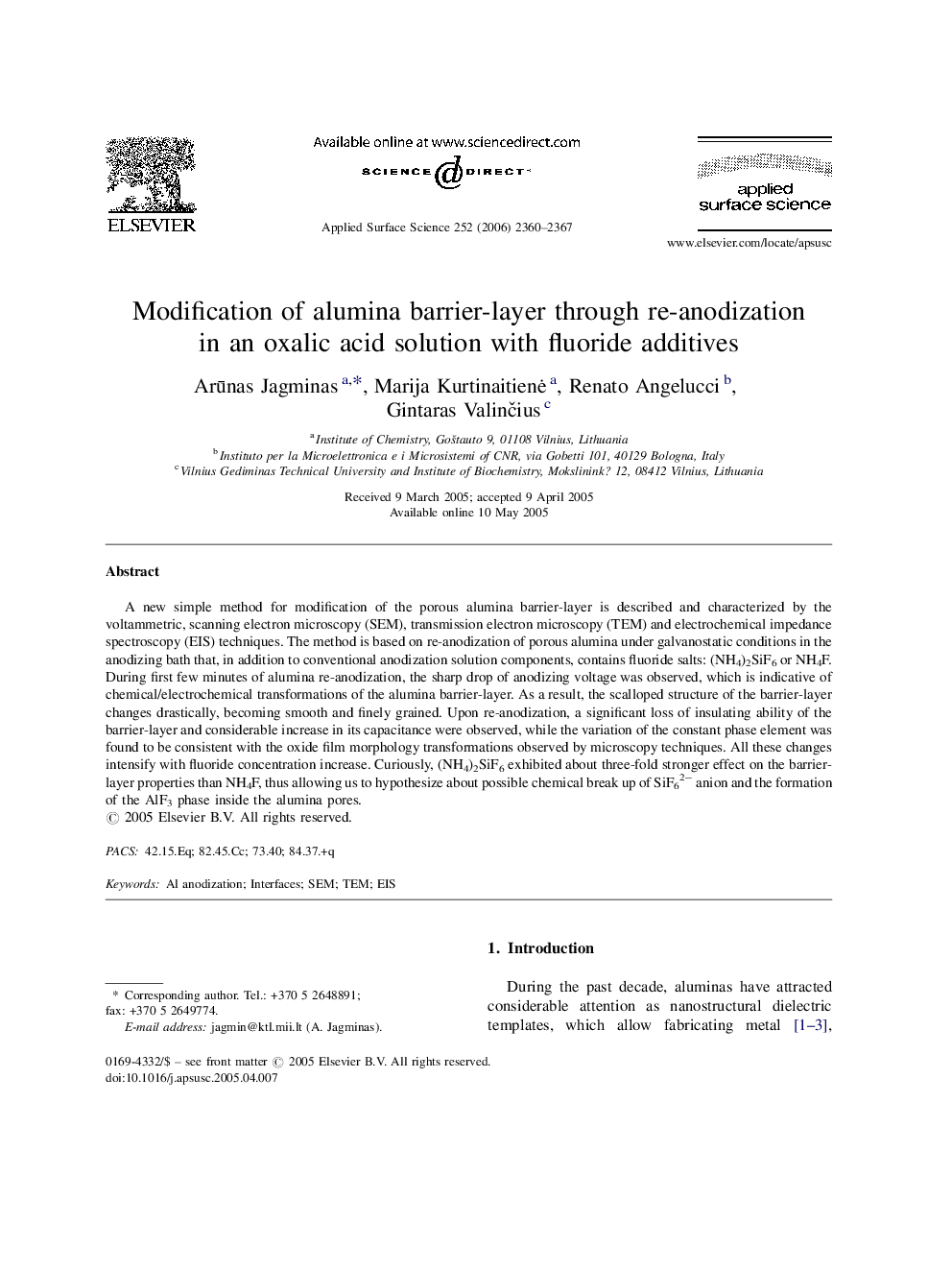| Article ID | Journal | Published Year | Pages | File Type |
|---|---|---|---|---|
| 5367640 | Applied Surface Science | 2006 | 8 Pages |
A new simple method for modification of the porous alumina barrier-layer is described and characterized by the voltammetric, scanning electron microscopy (SEM), transmission electron microscopy (TEM) and electrochemical impedance spectroscopy (EIS) techniques. The method is based on re-anodization of porous alumina under galvanostatic conditions in the anodizing bath that, in addition to conventional anodization solution components, contains fluoride salts: (NH4)2SiF6 or NH4F. During first few minutes of alumina re-anodization, the sharp drop of anodizing voltage was observed, which is indicative of chemical/electrochemical transformations of the alumina barrier-layer. As a result, the scalloped structure of the barrier-layer changes drastically, becoming smooth and finely grained. Upon re-anodization, a significant loss of insulating ability of the barrier-layer and considerable increase in its capacitance were observed, while the variation of the constant phase element was found to be consistent with the oxide film morphology transformations observed by microscopy techniques. All these changes intensify with fluoride concentration increase. Curiously, (NH4)2SiF6 exhibited about three-fold stronger effect on the barrier-layer properties than NH4F, thus allowing us to hypothesize about possible chemical break up of SiF62â anion and the formation of the AlF3 phase inside the alumina pores.
